How to go to Ostia Antica, this archaeological site located 45 min from Rome? Let's explain how to do it!
Ostia Antica (or Ostia) may not tell you much, but it is the ancient port of Rome. This city is often forgotten by tourists who came visit Rome , attests to the absence of crowds. Rome is of course already well filled in terms of sites to see, but Ostia is only 45 minutes away from the city and is worth making the trip. It is a wonderful archaeological site and it allows to spend a peaceful day, away from the bustle of the capital.
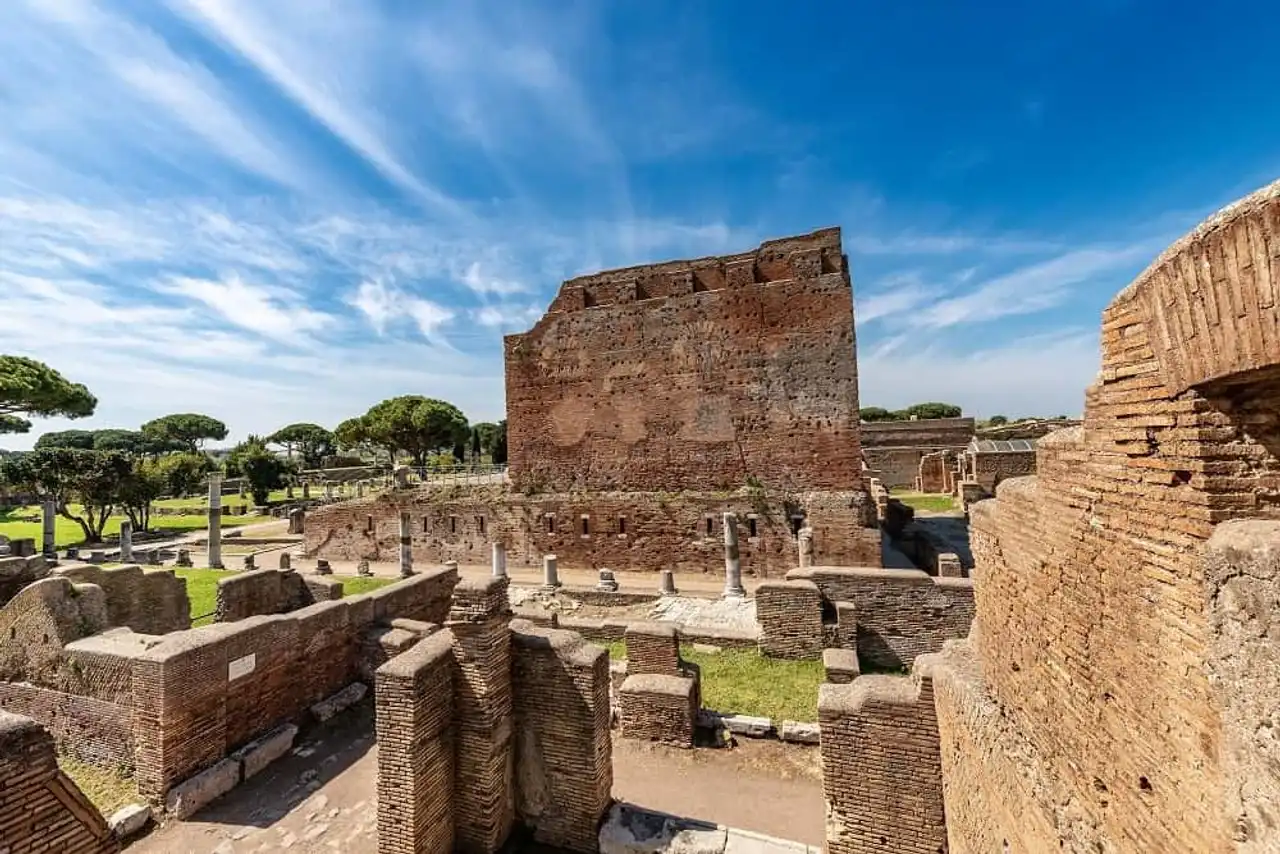
Photo credit: Shutterstock – Alberto Masnovo
Ostia Antica is not as famous as similar sites, as Pompei but in some respects it is more interesting. Ostia Antica gives you a more authentic look of Roman life on a daily basis because Ostia was a port city, not a rich city like Pompeii.
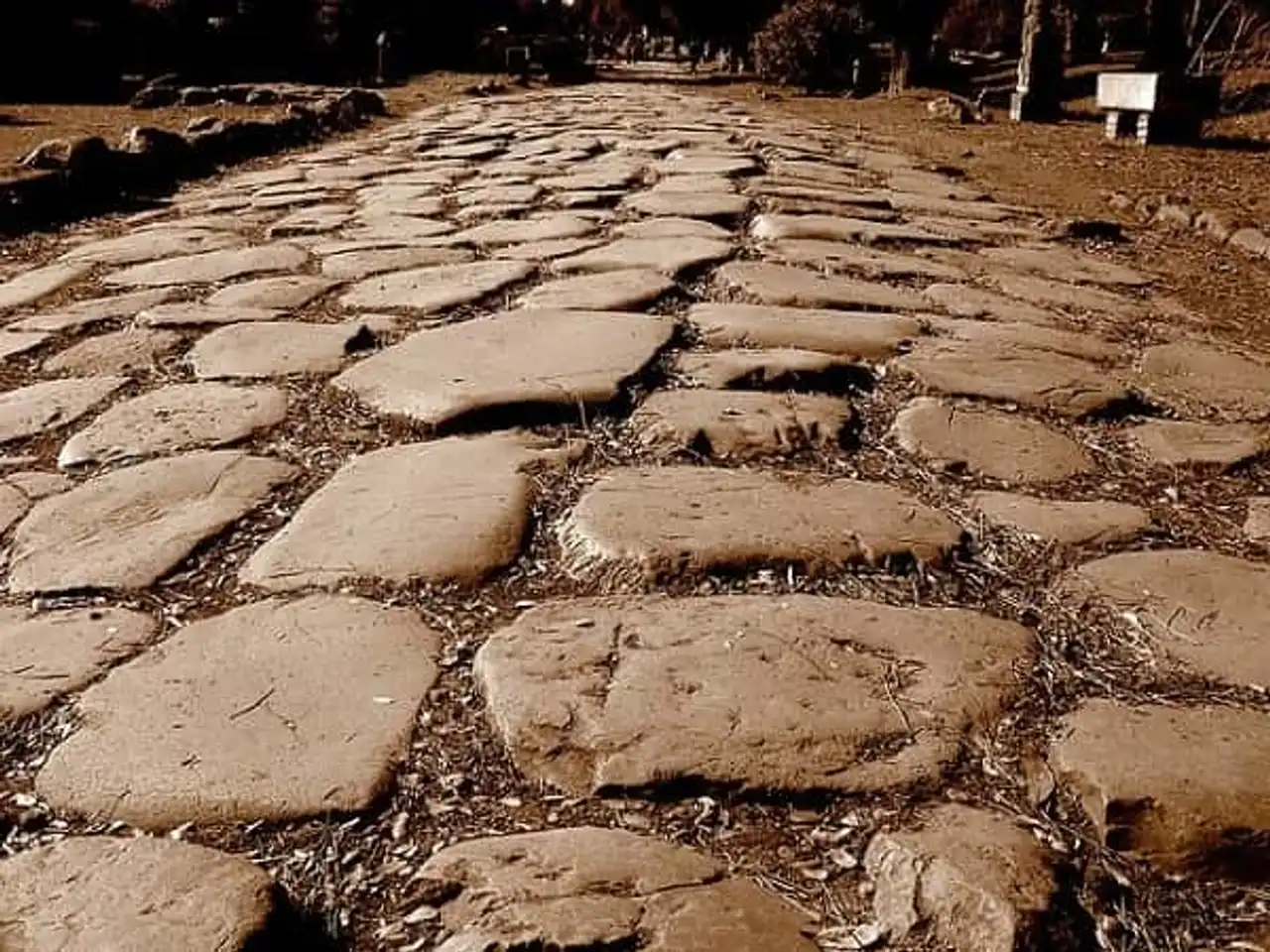
Flickr – gengish
Compared to Pompeii, one visit to Ostia Antica is much more pleasant. There are much less people and access to sites is less restricted. You can freely walk among the ruins at a quiet pace. Ostia Antica is a great site with so many things to see that one can easily spend an entire day watching and studying them, while relaxing.
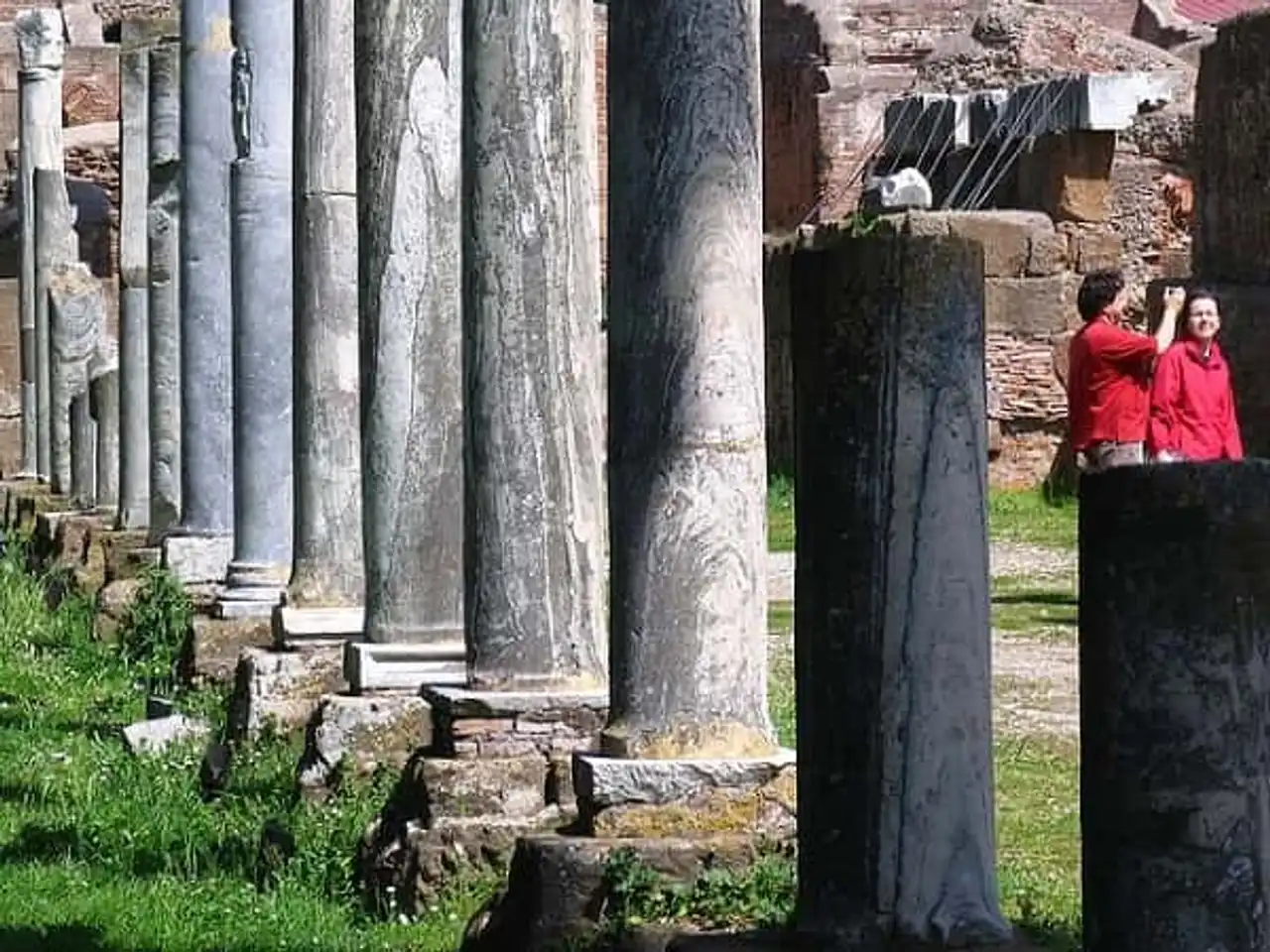
Flickr – candido33
The story of Ostia Antica
Ostia was founded in 620 BC, where the mouth of the Tiber was once. The city was named after its situation, Ostia meaning "mouth" in Latin. The coastline has since advanced towards the sea, due to the despair, so that Ostia is now located three kilometers from the Tiber.
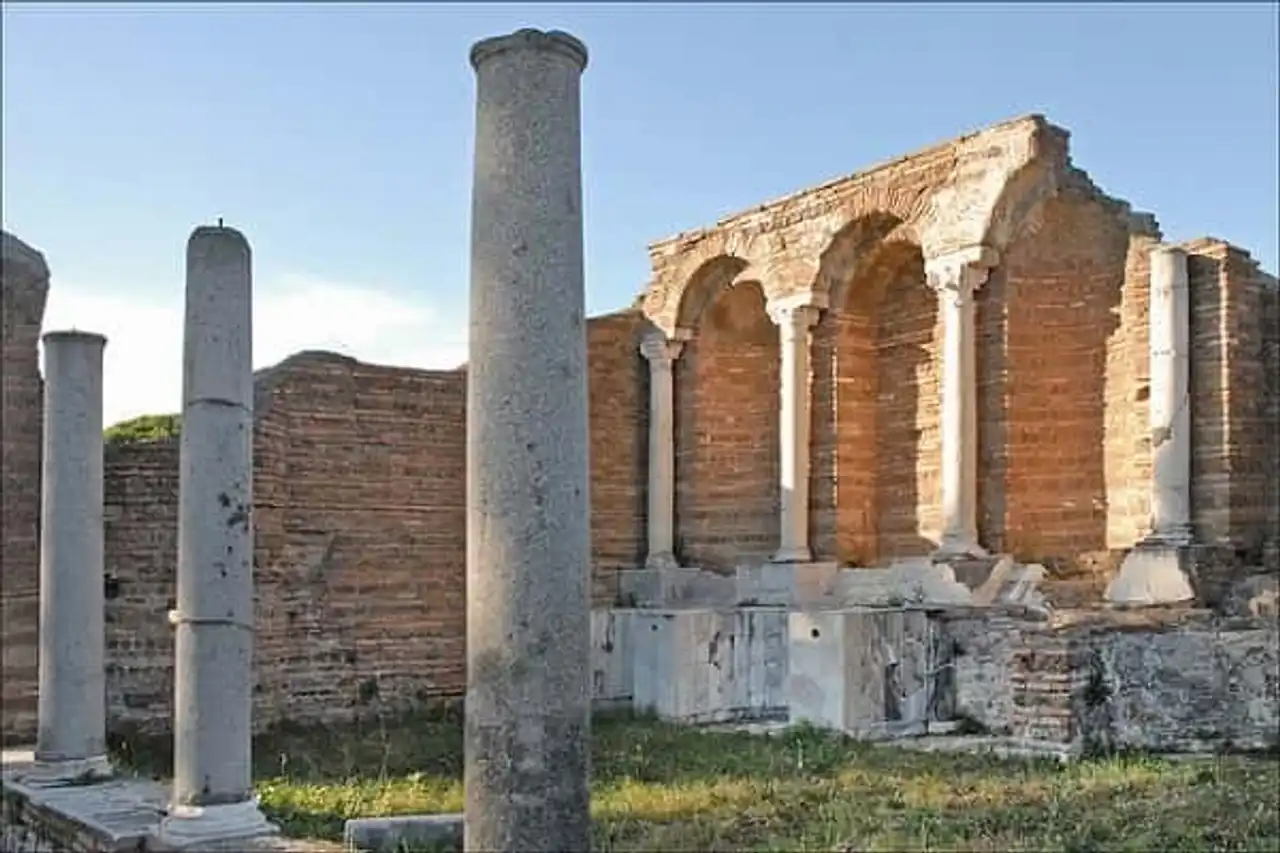
Flickr – dalbera
In her first days, Ostia’s main resource was the salt that the city was receiving very close salt marshes. Around 400 BC, when Rome began to grow, Ostia was conquered and became the first colony of Rome. It then served as a naval base, protecting Rome from an invasion by the river. As Rome took control of the Mediterranean, Ostia’s role was moving towards a port function, becoming an integral part of Rome’s commercial operations.
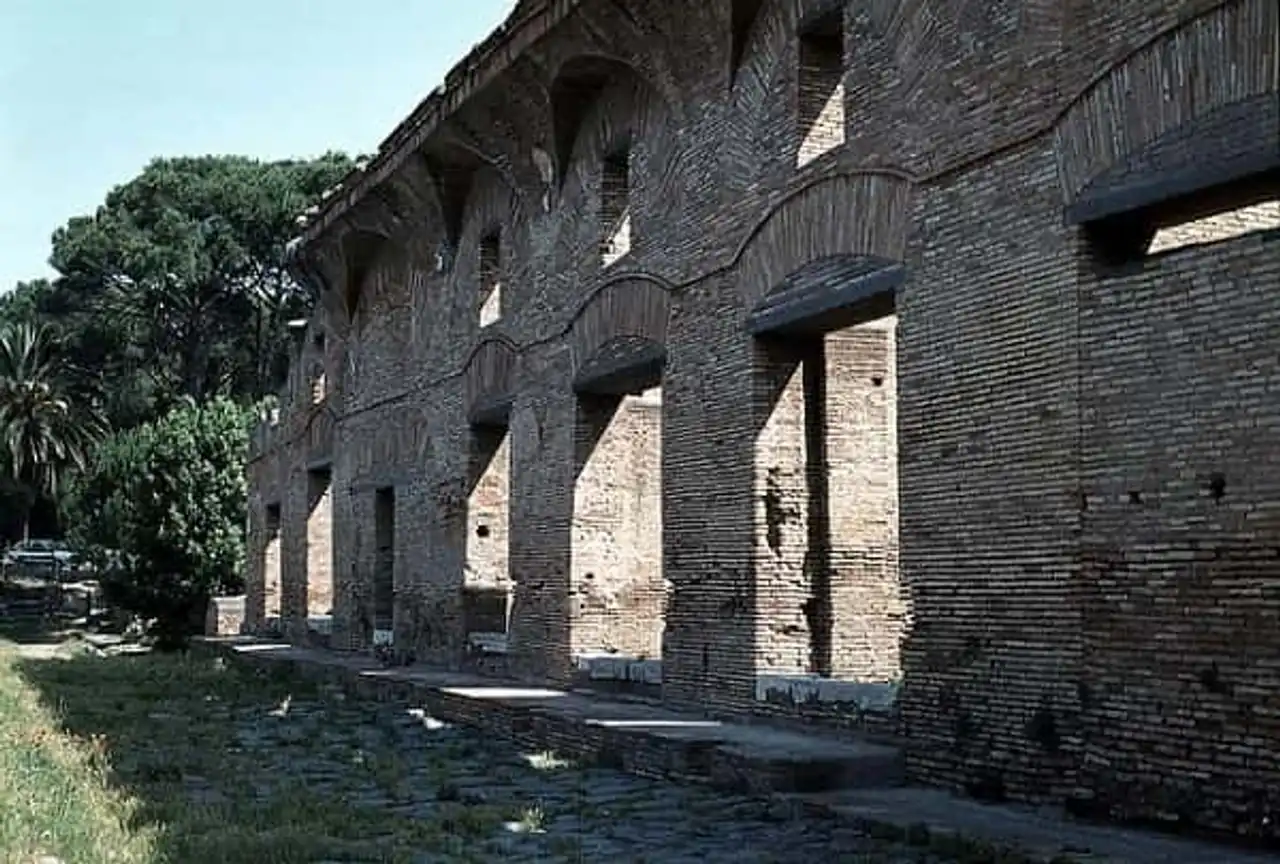
Flickr – isawnyu
Now an important maritime port, Ostia lived a “realistic boom” that led to great prosperity. In the first half of the 2nd century AD, the city was largely rebuilt. Most of the buildings were excavated under the reign of Trajan, Hadrian and Antonin the Pious.
The people of Ostia
Under Emperor Domitian (81-96 AD), Ostia was ruled by a small number of families of aristocratic merchants who lived near the centre of the city.
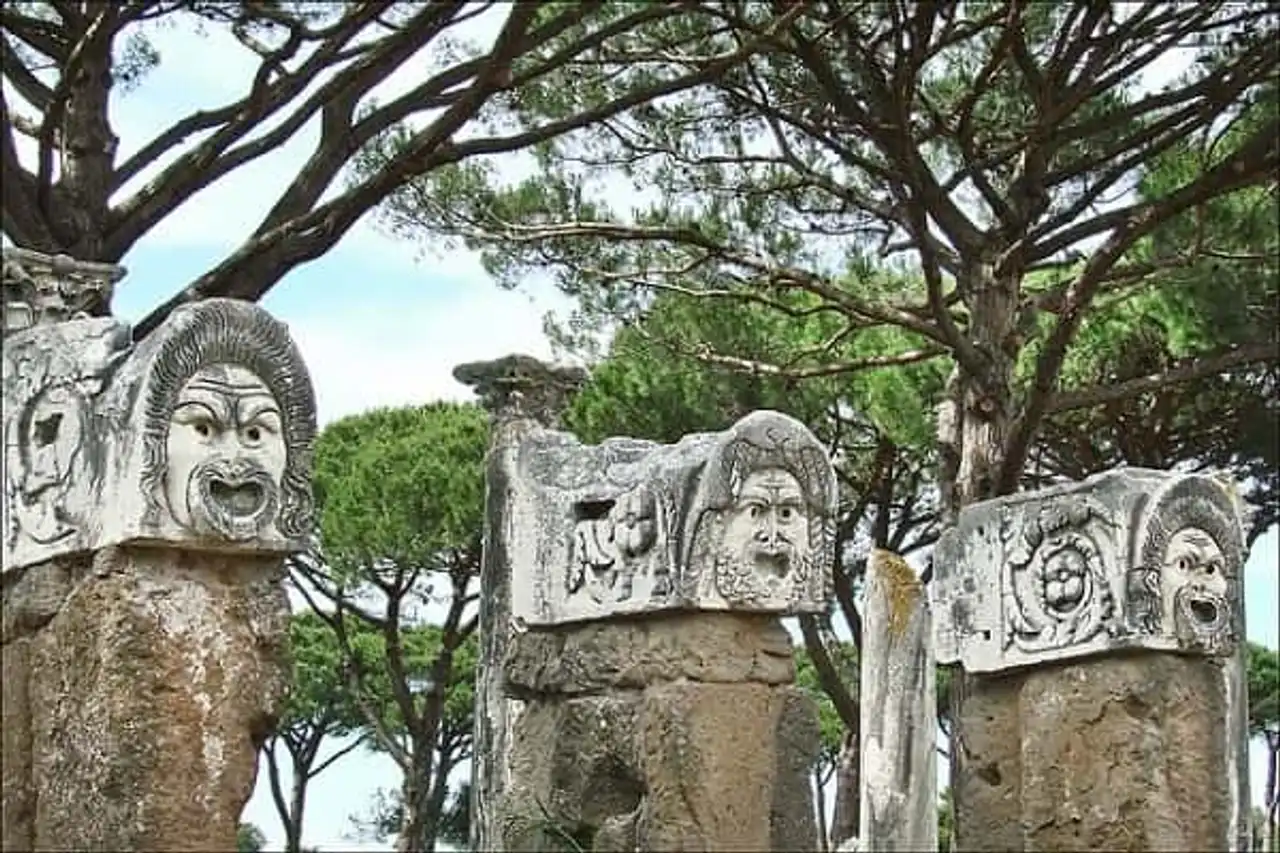
Flickr – dalbera
Immigration and the importation of slaves helped to increase the population of Ostie to fifty thousand inhabitants. There were about 17,000 slaves brought from Egypt, the Middle East and Turkey. Most families had at least one slave and there were many who worked in the port and storage buildings. They were manual workers, but also clerks and accountants. Once released, slaves were often used in the trade of their boss.
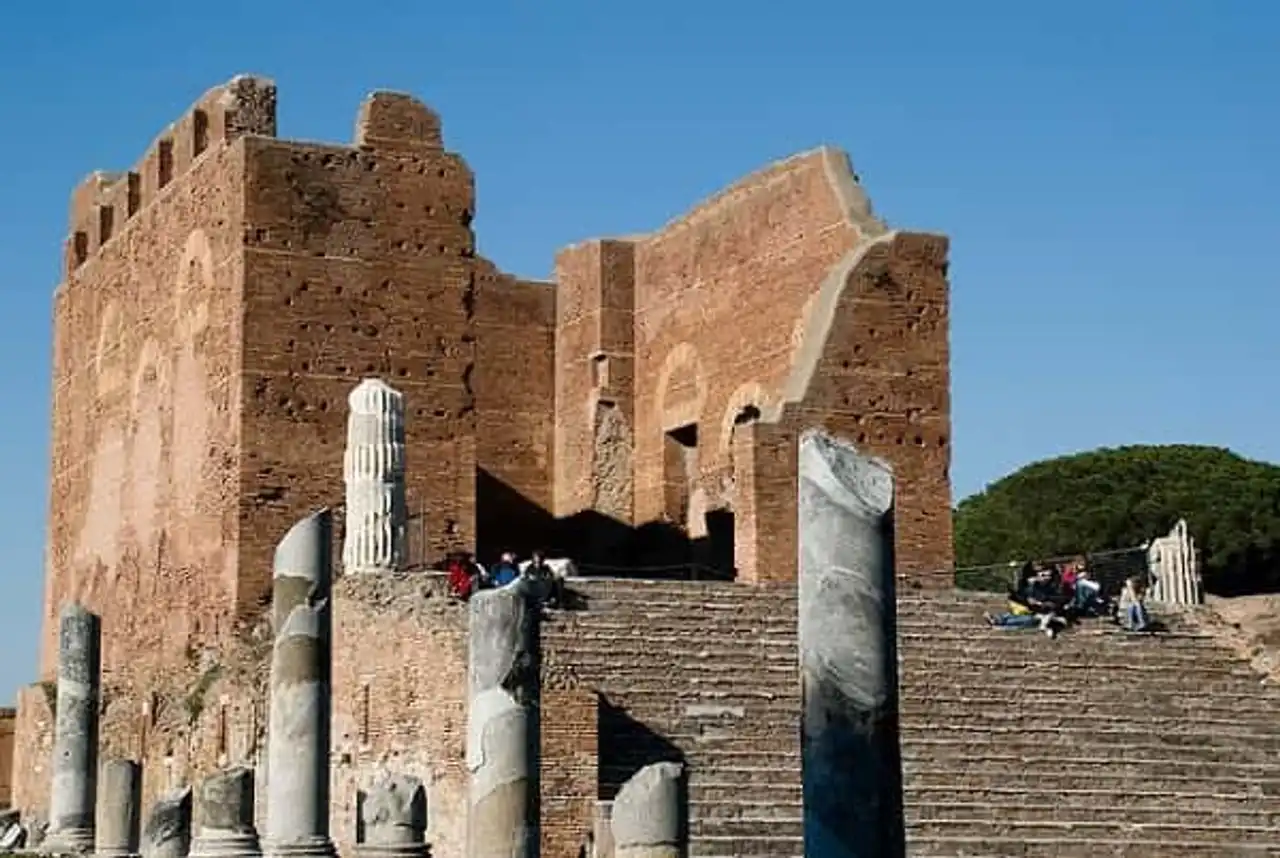
Flickr – ..Sté
The decline of Ostie
The decline of Ostia began at the end of the reign of the Severe Dynasty. Political chaos broke out in Rome and many emperors saw their reign end with revolt or assassination. The economy quickly collapsed, causing the departure of many people from Ostie.
In the second half of the third century and the fourth century, Ostia was struck by earthquakes and tsunamis. Often the ruins were not repaired because it was not profitable to rebuild them.
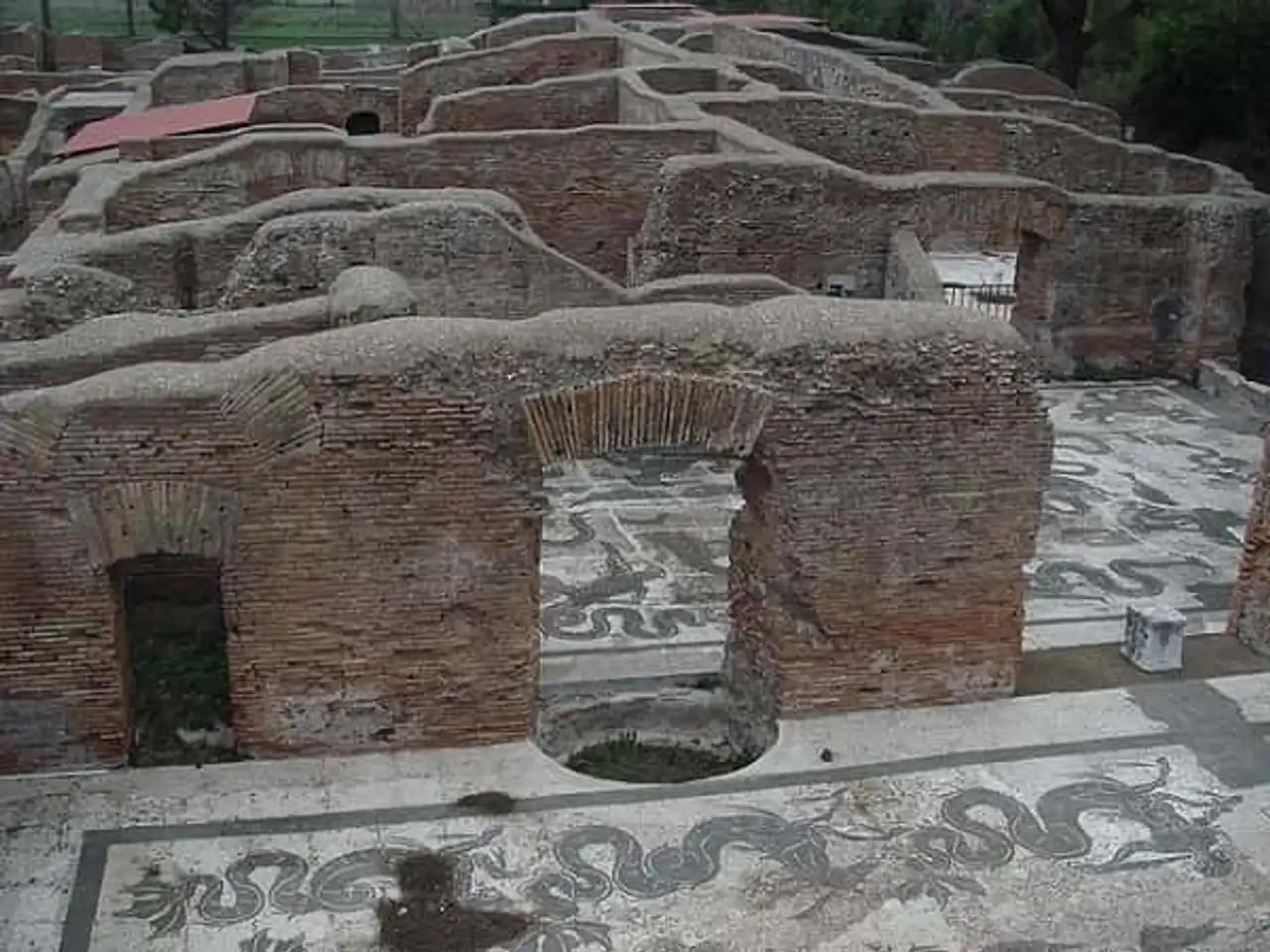
Flickr – eva_ben
With the fall of Rome, the port was abandoned. Over time, the port is absorbed and the mud that enterra Ostia eventually protects the vestiges of the destruction of time.
Buildings still standing
The Ostie excavations began at the end of the 19th century and most of the old town has since been discovered. The remaining structures are numerous and well preserved, including some housing buildings, giving visitors a good idea of what life was at the height of the Empire in an ancient Roman commercial city.
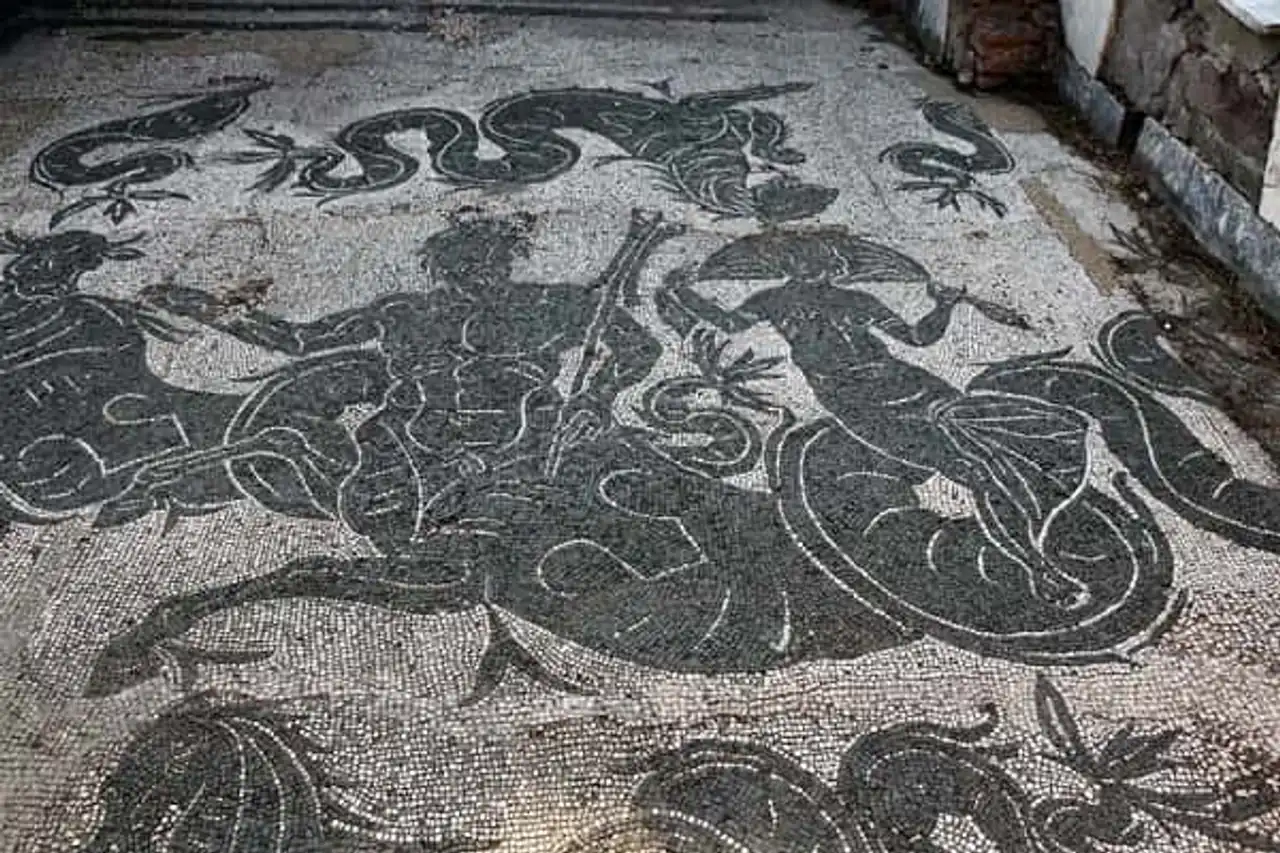
Flickr – Roger B. Ulrich
The theatre
The Ostie Theatre was built at the end of the first century BC and could accommodate up to 4,000 people who gathered here to entertain themselves. Like most of the theatres of Antiquity (even today in fact), the best places are near the podium were and were reserved for important people. The theatre was twice as high as the one we can see today.
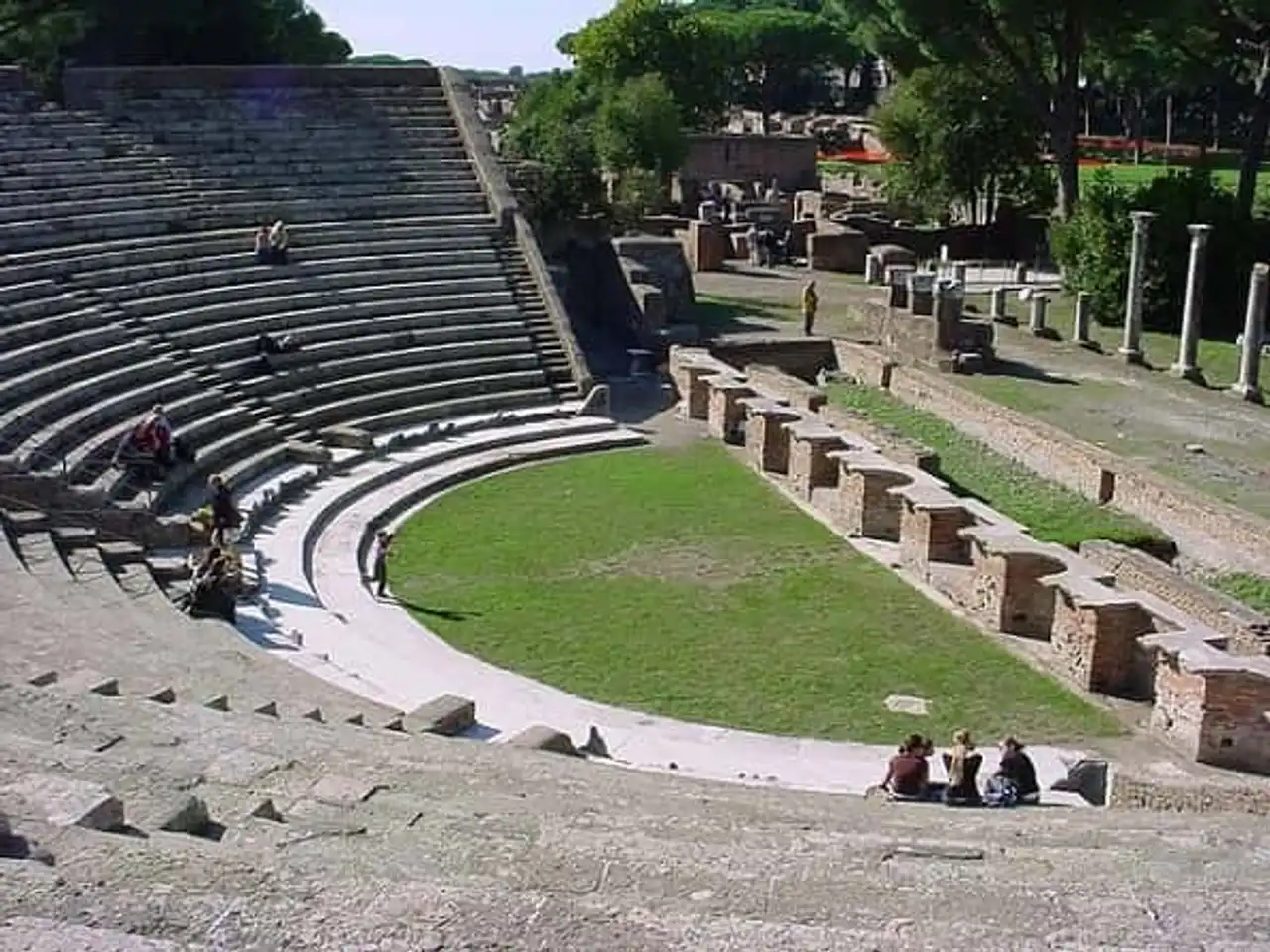
Flickr – marttj
Climb to the top of the theatre for a magnificent view of Place des Corporations, which was the lively center of the import/export industry of Rome.
The Baths of Neptune
Impressive black and white mosaics adorn the soil of the Neptune Baths. If you take a little height, you will see the drawing still intact.
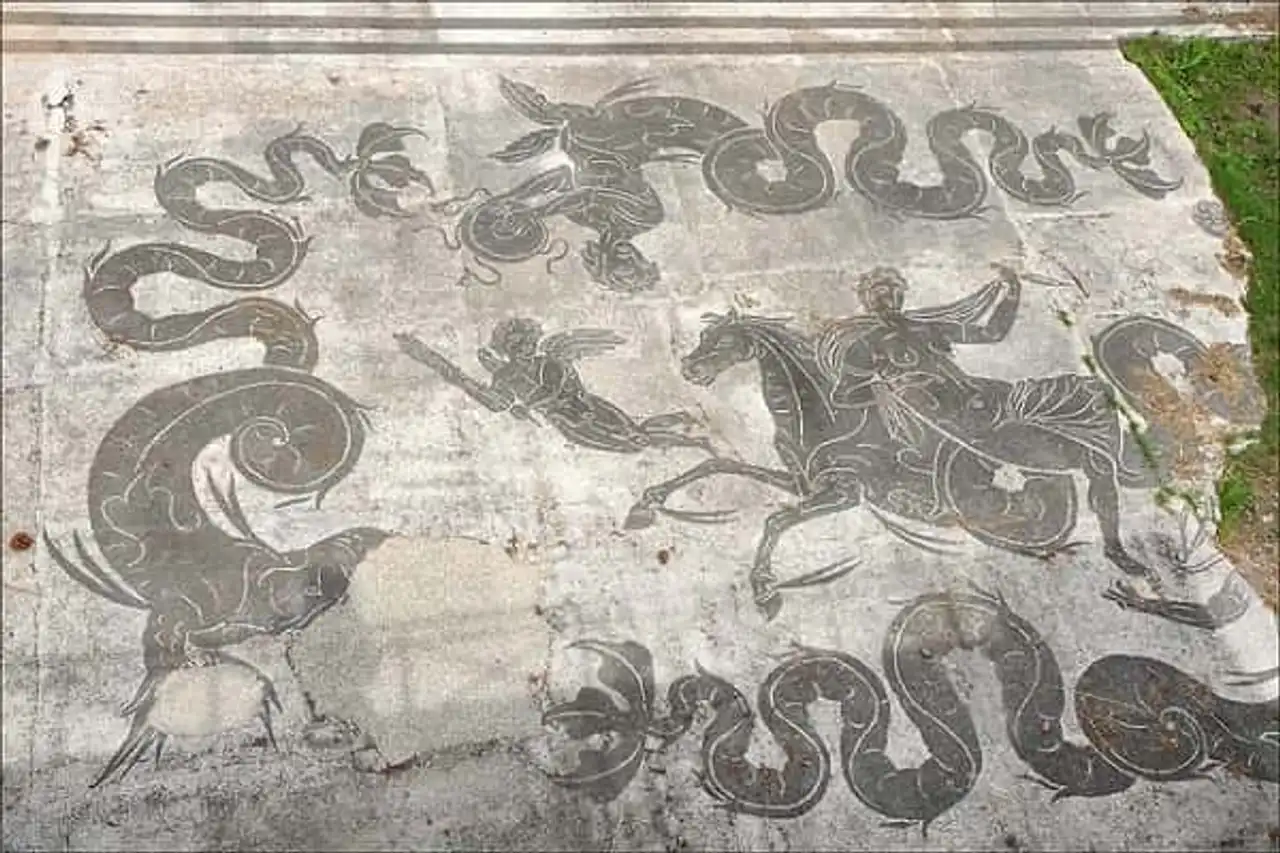
Flickr – dalbera
An inscription that was found indicates that the baths were built by Hadrian emperors (117-138 AD) and Antonin the Heaven (138-161 AD).
Les thermes du Forum
The forum thermal baths were among the largest baths in Ostia. You can always see the public latrines of twenty marble seats. The water was flowing in the small canals just in front of the seats.
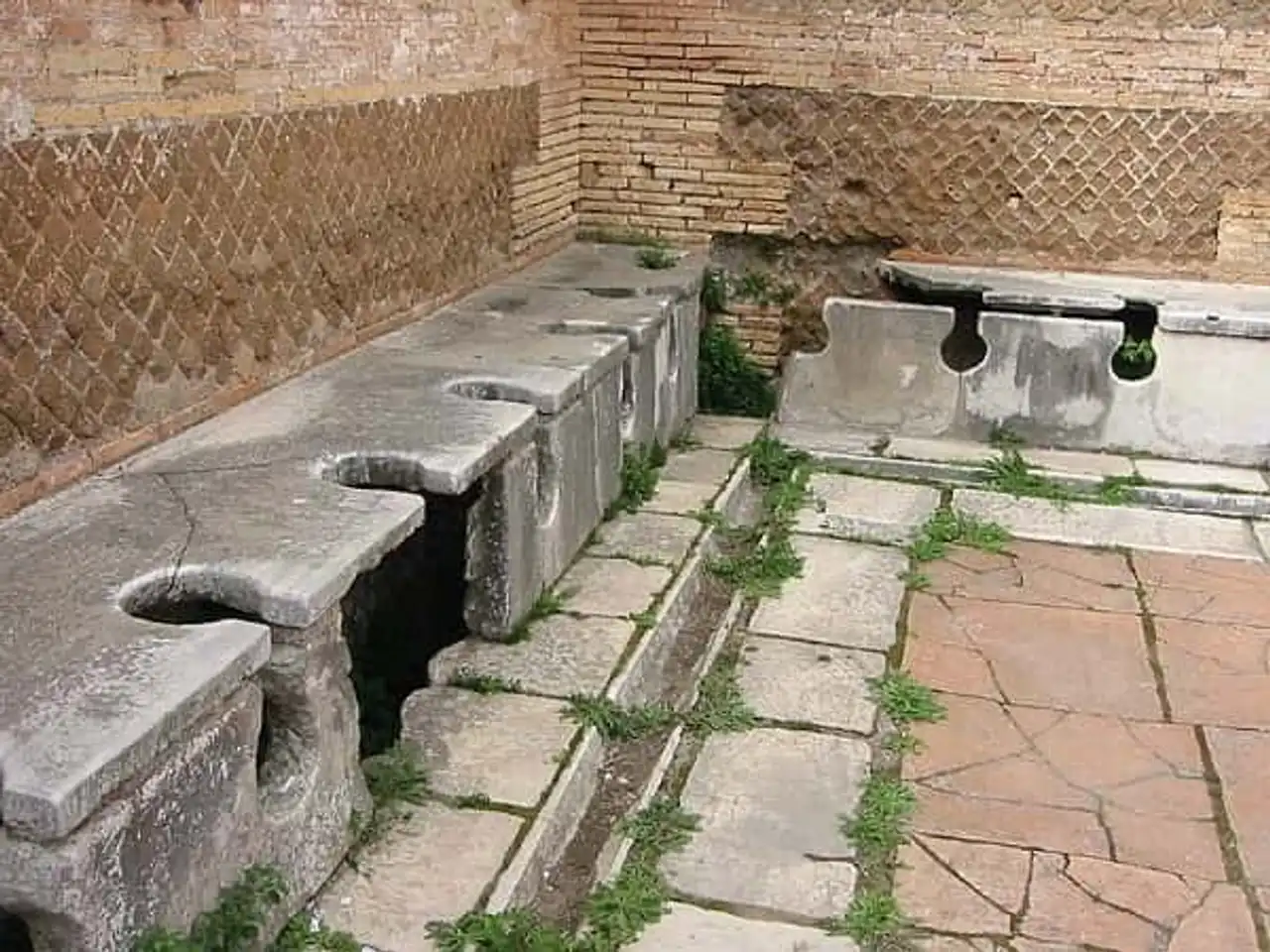
Wikimedia – Fubar Obfusco
How to visit Ostia Antica?
Coming to Ostia Antica from Rome is 45 minutes by metro + train. From Rome, take metro line B to stop Piramide . From there, walk a few steps to the station Roma Porta San Paolo . Follow signs to indicate direction of Lido . The trains leave every 15 minutes. The Ostia Antica stop is about 30 minutes away. A normal metro ticket will be enough for the entire trip.
The site is open from Tuesday to Sunday (closed on Monday) from 8:30 a.m. to 7:30 p.m. The ticket office closes at 6:00.
The entrance is from 6,50 € . Half price for young people aged 18 to 25. The ticket is valid for the whole day, so you can leave the site (e.g. to eat) and come back whenever you want.
There is a restaurant inside the site, next to the souvenir shop.
You can also swim in Ostia, the sea is right next door.







Loading comments ...